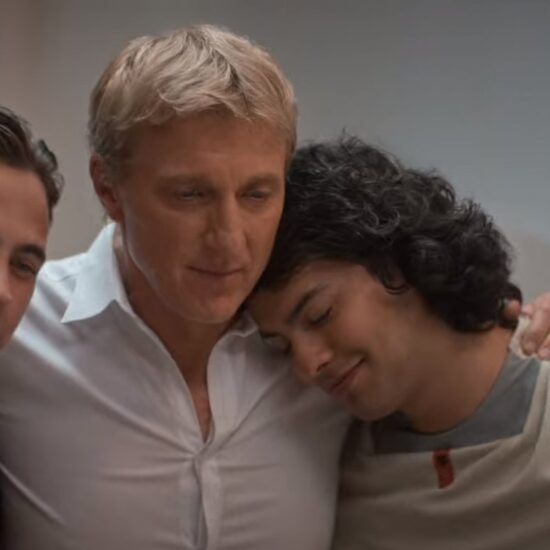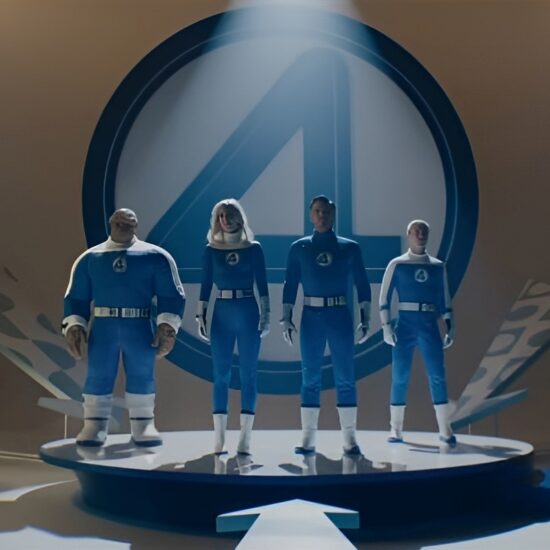The makers of Flashdance hoped for a hit, but no one had a feeling it would become a generation-defining sensation.
The Paramount film marked the first collaboration of producers Jerry Bruckheimer and Don Simpson, later known for blockbusters like Beverly Hills Cop and Top Gun. With a script co-written by Joe Eszterhas (Basic Instinct), Flashdance centered on Alex, a teenage welder in Pittsburgh who spends her nights performing at a cabaret bar but dreams of becoming a professional dancer.
Bruckheimer remembers the film’s team struggling to choose the lead, but that director Adrian Lyne was sold on newcomer Jennifer Beals. “The bosses at Paramount couldn’t make up their minds, so they brought all the secretaries in to view the screen tests, and they all picked Jennifer,” Bruckheimer tells The Hollywood Reporter.
Among the performers in the mix for the male lead of Nick, the steel mill owner who falls for employee Alex, was a young Kevin Costner, who read audition scenes with Beals and other actresses. “He definitely was considered,” Bruckheimer recalls. As for why Michael Nouri was ultimately the right fit for the part, the producer explains, “He’s handsome and a very good actor, and he did an excellent job.”
Michael Nouri and Jennifer Beals in Flashdance
Paramount/Courtesy Everett Collection
Regarding the audition process, Nouri — who has appeared with Costner on Yellowstone — says, “Kevin is a friend, and he has, in the days since, confirmed that yes, he auditioned for the role.” As for having prevailed over such fierce competition, Nouri adds, “It was a great compliment.”
Beals tells THR that she was working in Paris that summer after finishing high school and hoped to save up some money when she received a written letter from her agent — as she didn’t have phone access on her trip — asking her to stop by New York City on her way home to Chicago. Upon landing in NYC, the actress spent a night sleeping outside in a park until her mother implored her to stay with a relative in the city throughout the audition process.
When she learned that the part was hers, Beals had already briefly started at Yale University that fall before deferring. She was asked early on to do a nude scene but demurred. “Adrian called me and was trying to convince me that he would make it tasteful. I just said, ‘No disrespect to you, but I don’t know you,’ ” she says with a laugh. Lyne was swayed, and Beals emphasizes that she would love to work again with the filmmaker, who is also known for such titles as Fatal Attraction (1987) and last year’s Deep Water.

Jennifer Beals and director Adrian Lyne on the Flashdance set
Paramount/Courtesy Everett Collection
Flashdance launched fashion trends, with women mimicking Beals’ off-the-shoulder sweatshirt that became one of the film’s signature looks. Beals recalls having previously created her own DIY cutoff sweatshirt during an early wardrobe fitting for the film, which helped inspire her character’s unique sartorial choice. “I had left my sweatshirt in the dryer too long, and so I couldn’t get my head through the hole,” Beals says about the fateful fitting. “So I cut out the hole to make it bigger. And then [costume designer] Michael Kaplan just made it cooler and better.”
THR’s review praised the film’s “bounding, upbeat energy and sensational dance sequences,” but other critics were less impressed. Still, Flashdance was an immediate hit when it debuted April 15, 1983, collecting $92.9 million ($280 million today) to become the year’s No. 3 title domestically. It went on to earn four Oscar noms, including a best song win for Irene Cara’s “Flashdance… What a Feeling.”
Nouri remembers the mixed critical reaction to the film, which holds a 35 percent approval rating on Rotten Tomatoes. Still, he remains proud that the movie is such a crowd-pleaser: “It wasn’t favored by the critics, and that really didn’t make any difference in terms of the movie becoming iconic.” And Bruckheimer quips, “One reviewer called it a toxic waste dump and revisited it like 20 years later and said, ‘I missed it.’”

Jennifer Beals in Flashdance
Paramount/Courtesy Everett Collection
For Beals, whose recent credits include Netflix’s 2022 feature Luckiest Girl Alive and Disney+’s The Book of Boba Fett, the film’s enduring legacy stems in part from its inclusion of themes that weren’t as common for studio films of the era. She says, “When I think about that scene where she’s walking down the hallway, and there are all the ballerinas there, it’s not only a classist image, it also speaks volumes about barriers in regards to race as well.”

The Hollywood Reporter
A version of this story first appeared in the March 29 issue of The Hollywood Reporter magazine. Click here to subscribe.













